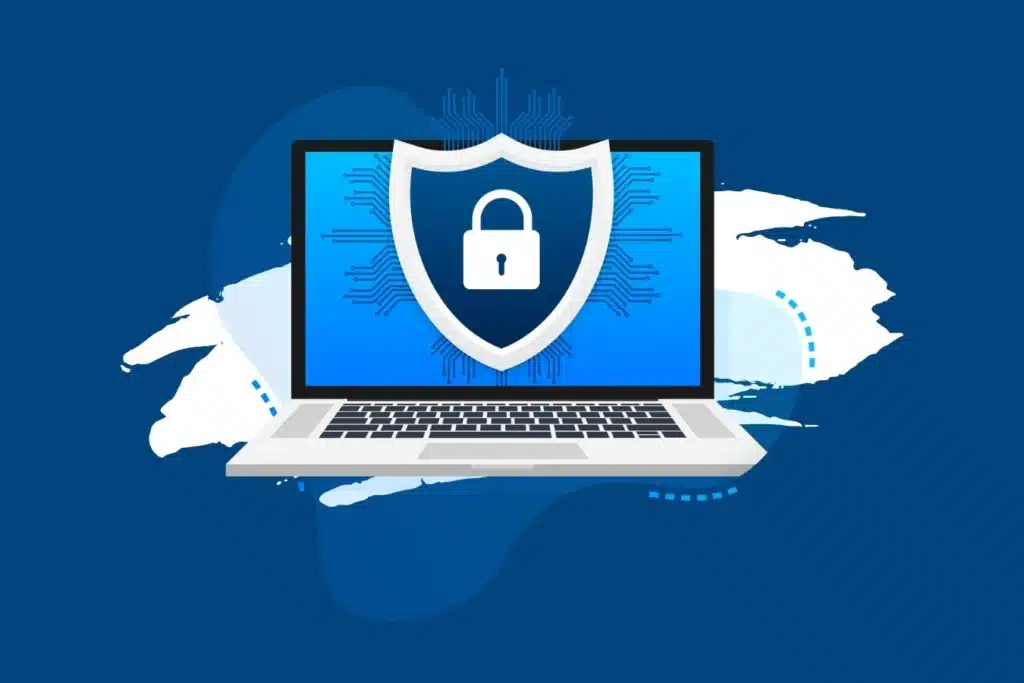When you are in business, the trust of your customers and credibility in the marketplace are built with years of hard work. Just imagine if that trust and reputation are wiped off overnight just because of a small mistake that you did not pay attention to the most critical need in business, i.e., security, the security of your consumer data and your company data as well. X (formerly Twitter) was attacked by a hacker and more than 220 million user email addresses were leaked in 2023.
If such a high-level security breach can happen with giants, then for small businesses, it’s a big concern, and managing a full-fledged cybersecurity team within budget constraints is difficult. That is where Cybersecurity as a Service (CSaaS) steps in.
Cybersecurity for small businesses is easily facilitated by CSaaS technology, where companies can now simply subscribe to expert cybersecurity services, which include detection, real-time threat termination, and monitoring. Instead of hefty investments in big full-time security staff and cybersecurity tools.
Let’s understand this cybersecurity outsourcing in a detailed way with examples, how it works, pros & cons, and more.
What is Cybersecurity as a Service (CSaaS)?
Cybersecurity is not a very new concept. It started around the 2000s with antivirus software and on-premises firewalls, and has evolved to modern-day CSaaS. But don’t confuse it with the internet and cloud-based services; it’s not exactly about cloud technology, but more about how cybersecurity is delivered and managed.

Cybersecurity as a Service, or CSaaS, means renting or subscribing to cybersecurity protection services rather than building a whole system and managing it all by yourself.
Think of it like any movie streaming platform, say Prime Video, but for cybersecurity, you pay that service a yearly or monthly fee for their experts monitoring, detecting, and protecting your business and its systems from cyber mishaps. And that’s how CSaaS can provide you with enterprise-level cybersecurity protection, avoiding the high cost and complexity.
Working of CSaaS
CSaaS is like your remote security team working to protect your business. Understand how this process works step by step.
1. Assessment & Setup
The first service provider will study your business and understand the level of security it requires. By this, they can identify vulnerabilities and accordingly set up monitoring tools.
2. Continuous Observations
Your networks, systems, devices, and applications are monitored 24/7 to detect any unusual activity or potential cyber threats.
3. Threat Detection
The AI-powered processes and cutting-edge tools examine your traffic and patterns to point out malware, phishing, ransomware, or suspicious activity.
4. Response
There is a quick response from the team if there is any detection of a threat, and immediate action is taken to block it and mitigate any damage.
5. Threat Intelligence
The CSaaS service provider stays updated with data from global sources to understand possibilities of new threats and vulnerabilities, and they can be proactively prevented.
6. Reporting & Improvement
There are regular reports displaying your security status, mentioning risks, and identifying room for improvement.
Types of CSaaS
1. Managed Cybersecurity Services
It is where a team of experts is provided to businesses, which keeps the systems in check all the time. They ensure proper working of firewalls, antivirus systems, and other protections, and take timely actions in case of unusual happenings. It’s like having a security guard for your digital world of business.
2. Threat Detection & Response (TDR)
This is a type of CSaaS that focuses on spotting cyberattacks as quickly as they take place. It is for immediate and quick management so that major damage can be prevented. It’s like an alarm system that sends alerts and automatically closes doors as well in case of an emergency. TDR is your ultimate cyber threat detection and response tool.
3. Threat Intelligence Services
As the name suggests, this CSaaS is about intelligence, i.e., prior information to avoid mishaps and stay ahead & well prepared in strategies. Threat intelligence services gather global data to stay ahead of hackers and be capable enough to predict new attacks and be prepared for them.
4. Cloud Security Services
They protect cloud applications and their data. They make sure the storage is safe and secure from hackers and attackers.
5. Compliance & Risk Management Services
These services are responsible for helping businesses adhere to rules and regulations with regard to data safety. By figuring out weak spots and bottlenecks in systems, they help in lowering the breaches and legal difficulties.
6. Endpoint Security as a Service
You can call it an end-to-end security system that protects individual computers, phones, and every device connected to your network. This ensures that hackers can’t even get through your single weak point.
7. Identity and Access Management (IAM) Services
It keeps in check who can see and use the systems and data of your company. IAM services allow only the right people to access it, and prevent unauthorized access, causing damage.
Real-Time CSaaS Case Studies

1. EY & Medical Service Provider (Healthcare)
By teaming up with a medical service provider, EY helped them enhance their cybersecurity framework. They provided them 24/7×360 monitoring to improve threat detection, response to threats, ensure patient data safety, and avoid any hindrance in continuous healthcare delivery.
2. J.P. Morgan (Finance)
One of the biggest US banks has pledged to make its firm cybersecure. The CSaaS providers help them in real-time monitoring and respond timely to any global operations. They make sure the transactions are secured and the data is in place, and they minimize the chances of theft, phishing, and other fraud that may affect their asset base of more than $3 trillion.
3. Tesla (Manufacturing)
Tesla was attacked with ransomware, which was contained internally. The incident took place in 2020, and Tesla then began using the CSaaS platform with extreme threat intelligence and endpoint protection. This proactive approach helped them stay protected from cyber attacks and theft, which led to innovative operations being conducted safely across the globe.
Challenges & Benefits of CSaaS
| Benefits of CSaaS | Challenges of CSaaS |
| 24/7 monitoring and protection | Dependence on third-party provider |
| Cost-effective compared to in-house teams | Possible data privacy concerns |
| Access to expert cybersecurity professionals | Integration with existing systems can be complex |
| Real-time threat detection and response | Limited control over certain security processes |
| Scalable solutions for growing businesses | Requires trust in the vendor’s reliability |
| Regular updates and compliance support | May need staff training to work with new systems |
| Rapid deployment and setup | Potential hidden costs in contracts or add-ons |
| Proactive threat intelligence | Challenges in aligning with company-specific policies |
| Reduces burden on internal IT staff | Response times may vary depending on the provider |
| Continuous improvement through analytics | Risk of over-reliance on automation instead of human oversight |
Summary
In a world full of technology, security is the topmost priority, and cyber attackers and threats aren’t waiting for you or your business’s permission to intrude. But at times, it is difficult to build and manage high-proficiency security systems. Especially for small organizations, affordability is an issue. And CSaaS works as a windfall in cybersecurity for small businesses without the burden of maintaining in-house teams and expensive cybersecurity tools.
By carefully studying the types of CSaaS, like cyber threat detection and response, threat intelligence services, or MCS, and many more, you can choose the right one as per business needs. It will assist you to stay safe, secure, and ahead of hackers and cyberattackers in a cost-effective manner.
Related: SaaS Security Checklist: The Complete Guide
Related: What is this Levy: Google Disney Mobile Charge?


